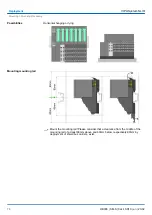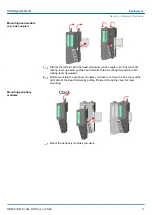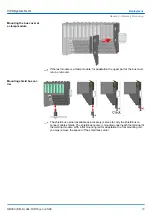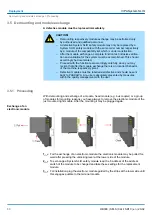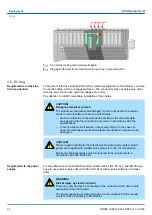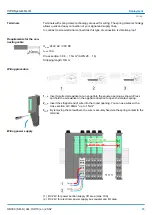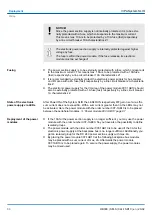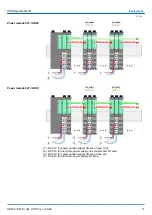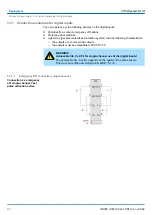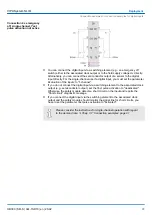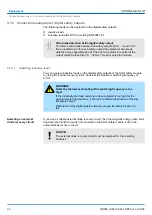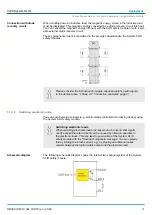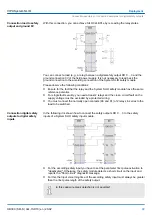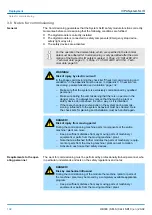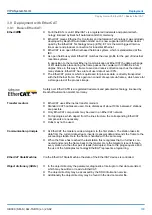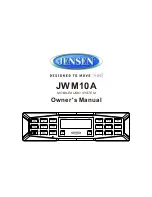
n
To attach the shield the mounting of shield bus carriers are necessary.
n
The shield bus carrier (available as accessory) serves to carry the shield bus to con-
nect cable shields.
n
The shield bus carrier is mounted underneath the terminal of the terminal module.
With a flat mounting rail for adaptation to a flat mounting rail you may remove the
spacer of the shield bus carrier.
n
After mounting the shield bus carrier with the shield bus, the cables with the accord-
ingly stripped cable screen may be attached and fixed by the shield clamp.
1
Shield bus carrier
2
Shield bus (10mm x 3mm)
3
Shield clamp
4
Cable shield
3.6.1 Requirements to the sensor and actuators
Note the following warning in terms of safety-oriented operation of sensors and actuators:
CAUTION!
A safety system always consists of sensors, logic and actuators. The
usage of the sensors and actuators lies outside of our sphere of influ-
ence. We equipped our electronics safety-relevant in such a way that we
can offer you for the sensors and actuators 85% of the maximally permis-
sible probability of dangerous errors (corresponds to the recommended
dispatch between sensors, actuators and the electronic circuits for input,
processing and output in expenditure in safety technology).
Instrumentation using sensors and actuators poses considerable safety
responsibility. Not safety-rated sensors may not be offhand used!
Note that sensors and actuators generally do not allow a proof-test
interval of 10 years to IEC 61508 standard.
A safety function must comply in terms of the probability and rate of haz-
ardous faults with limits determined by the safety integrity level (SIL). The
achieved values may be found in the technical data at "Safety relevant
parameters”.
Chap. 1.17 ‘Functional safety - safety relevant parame-
In order to achieve the desired security level, suitably qualified sensors
and actuators are necessary.
Shield attachment
VIPA System SLIO
Deployment
Wiring > Requirements to the sensor and actuators
HB300 | SM-S | 02x-1SD10 | en | 20-02
88



